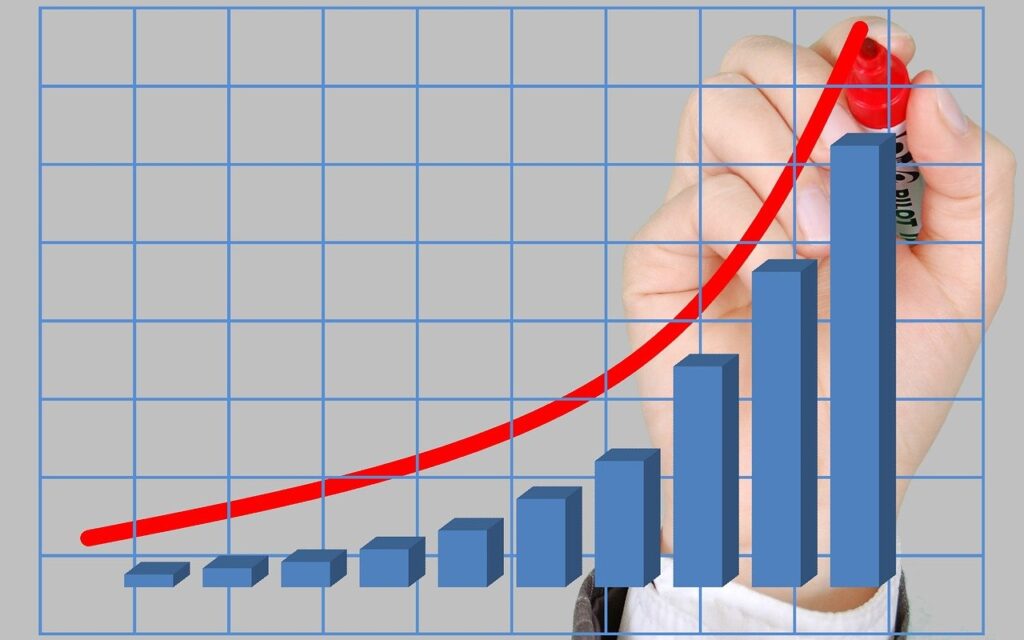- According to BLS statistics released Thursday, consumer prices climbed 0.4% in September and were up 8.2% year on year.
- With food and energy excluded, the core consumer price index increased by 0.6% and 6.6%, respectively. The core annual gain was the largest since August 1982.
- Wages for workers fell 0.1% monthly and 3% year on year when adjusted for inflation.
- Markets currently anticipate that the Fed will raise interest rates by 0.75 percentage points in November and December.

Consumer prices for a wide range of goods and services grew more than expected in September, as inflationary pressures weighed on the US economy.
According to the Bureau of Labor Statistics, the consumer price index gained 0.4% for the month, above the 0.3% Dow Jones projection. So-called headline inflation was up 8.2% year on year, down from a record of about 9% in June but still at the highest levels since the early 1980s.
Excluding volatile food and energy costs, core CPI increased 0.6% for the month, above the Dow Jones forecast of a 0.4% increase. Core inflation was 6.6% higher year on year, the highest 12-month increase since August 1982.
The data initially shook financial markets, with stock market futures falling and Treasury rates rising as traders priced in more aggressive interest rate rises from the Fed.
Those initial losses, however, were reversed in morning trade, with the Dow Jones Industrial Average rising more than 500 points by 11:45 a.m. ET.
“The Federal Reserve has made it very clear that they are dedicated to pricing stability and minimizing inflationary pressures,” said Michelle Meyer, the Mastercard Economics Institute’s top U.S. economist.
“The greater the inflation rate, the more they’ll have to verify their commitment, which implies higher interest rates and a slowdown in the underlying economy.”
Some are bracing for a jumbo hike due to the ‘worst CPI’: Wall Street Reacts
Wall Street expectations that the Federal Reserve will be able to lighten up on its fight against inflation later this year were crushed Thursday when September consumer price index data came in surprisingly high.
The core CPI, which excludes food and energy, climbed 6.6% over the previous year, reaching its highest level since 1982.
S&P 500 futures fell below 2% after climbing as high as 1.3%, while 10-year Treasury rates soared beyond 4%.
“Horrible CPI figure,” remarked Andrew Brenner, NatAlliance Securities’ head of international fixed-income. “Will they go 100 bases?” he questioned about the Fed’s interest rate policy.
Here’s what some experts had to say:
Seema Shah, Principal Asset Management’s Chief Global Strategist:
“There can’t be anyone in the market who believes the Fed will raise rates by less than 75 basis points at its November meeting.” In fact, if this kind of upside surprise is repeated next month,
we could be facing a fifth consecutive 0.75% hike in December with policy rates blowing through the Fed’s peak rate forecast before
“The composition of the inflation reading may be more concerning than the total figure.” Increases in the CPI basket’s most resistant categories, housing, and medical care, suggest that price pressures are exceedingly tenacious and will not abate without a Fed struggle.”
What is the current CPI index?
CPI measurements that are not seasonally adjusted The Consumer Price Index for All Urban Consumers (CPI-U) grew 8.3 percent in the past year to 296.171 (1982-84=100).
What is the CPI rate for 2022?
The Consumer Price Index rose 8.5 percent for the fiscal year ending March 2022, following a 7.9 percent gain from February 2021 to February 2022.
What is the estimated CPI for July 2022?
In July 2022, the Consumer Price Index remained constant from the previous month but increased by 8.5 percent year on year. After gaining 1.3 percent in June and 1.0 percent in May, the Consumer Price Index for All Urban Consumers remained steady in July 2022 (seasonally adjusted).
What is the CPI for May 2022?
Consumer prices increased 8.6 percent year on year until May 2022: U.S. Bureau of Labor Statistics: The Economics Daily The.gov indicates that it is official.
Is CPI the same as inflation?
Is the Consumer Price Index the same as inflation?
Prices often grow with time, but they can also decline (a situation called deflation). The Consumer Price Index (CPI), which measures the percentage change in the price of a basket of goods and services used by households, is the most well-known indicator of inflation.
Rent is estimated to have driven consumer inflation in September.
By November and December, prices in some categories could be affected by the hurricane as Floridians replace storm-ravaged cars and repair or rebuild homes. That could drive up the costs of building materials, new and used car prices, as well as the cost everything from appliances to home furnishings.
Bank of America expects core goods were up by 0.2% in September, down from the 0.5% gain in August. Services are expected to rise by 0.5%, driven by shelter costs, which are 40% of core CPI.
Bank of America economists expect food prices to be up 0.7%, slightly slower than the 0.8% gain in August. After falling 5% in August, energy costs are expected to decline by another 3.5%.
Economists expect that services inflation continued to run hot in September, due to rising wages and labor shortages. Prices are expected to have been higher for rents and all shelters, including hotels.
Education costs are expected to have risen as schools and daycares reopened, and medical services costs were also seen moving higher. Airfares and car insurance were also expected to rise, but used car prices are mostly expected to decline.
Economists predict services inflation to remain high in September, owing to growing wages and labor shortages. Rents and other forms of shelter, including hotels, are projected to be more expensive. Education expenditures are likely to climb once schools and daycare centers reopen, and medical services costs are also expected to rise.
Airfares and auto insurance are projected to climb as well, although used car costs are expected to fall.
Inflation is the center of attention.
The market is intensely focused on the CPI since it is regarded as a key input for the Fed. Furthermore, last week’s robust September employment data offered investors little faith that the Fed will delay its rate rises.
“I don’t think the job data provided them much of a reason to change their tune,” Gapen added.
Since March, when it was zero to 0.25%, the Fed has boosted the fed funds target rate range to 3% to 3.25%. Economists predict that authorities will raise interest rates by at least one full percentage point before the end of the year.
“If CPI comes in high, the markets will fall.” “Equities will not like it,” Gapen said. “If it’s a bit lower, they’ll say the labor market is still robust, and they’ll raise it by 75 [basis points].”
Markets likely expect a three-quarter point rate rise unless the data is far below expectations, he added. A basis point is equivalent to 0.01 percent.
REITs are anticipating the release of the Consumer Price Index report
The consumer price index (CPI) data from the United States Bureau of Labor Statistics is significant for real estate investment trusts (REITs).
This is due to the fact that the majority of them are interest-rate sensitive. If the CPI indicates higher-than-expected inflation, the Fed is likely to raise interest rates more aggressively. When this happens, real estate investment trusts suffer.
REIT prices may fluctuate until October 13, but they are expected to change once the inflation data is released.
Fed policymakers consider it an important economic signal and may opt to keep raising interest rates depending on the outcomes. Because REITs are so impacted by interest rates, October 13 is likely to witness price volatility.



